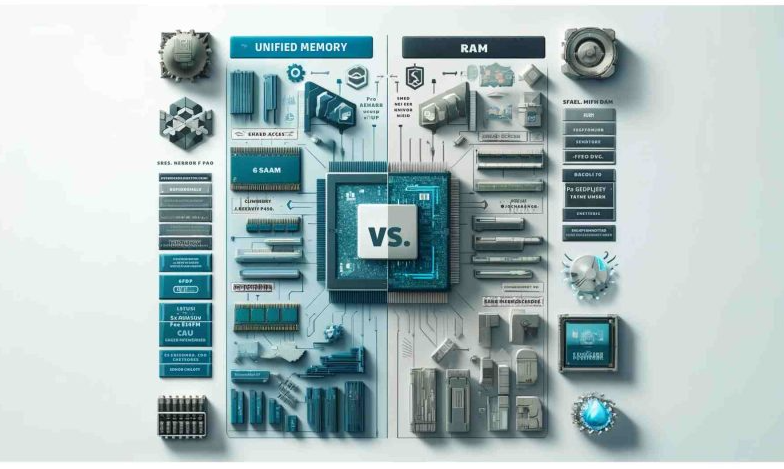When choosing between devices, especially Apple’s M1/M2 Macs versus traditional computers, it’s essential to understand the memory types inside—Unified Memory and RAM. Both play critical roles in device performance, but they operate differently. Here’s a breakdown of each to help you decide what’s best for your needs.
1. What Is Unified Memory?
Unified Memory is Apple’s approach to memory management in its M1 and M2 chips. It combines RAM and VRAM into a single memory pool, making data accessible to both the CPU and GPU without duplication or latency.
Advantages: Faster data access, optimized for high-performance tasks, and improved battery life.
2. What Is Traditional RAM?
RAM, or Random Access Memory, is the primary memory in traditional computers, allocated specifically to the CPU. It’s separate from the GPU’s memory (VRAM), meaning each processor type has its own memory pool.
Advantages: High versatility in standard PCs, often available in customizable sizes for various user needs.
3. Key Differences Between Unified Memory and RAM
Memory Sharing: Unified Memory is accessible by both CPU and GPU without duplication, making it faster. Standard RAM does not allow this type of shared access.
Efficiency: Unified Memory is highly efficient for Apple devices, especially in memory-intensive tasks like 3D rendering, while traditional RAM offers a good balance for everyday tasks in non-Apple devices.
Battery Impact: Unified Memory enhances power efficiency, providing better battery life in Apple devices compared to traditional RAM.
4. Which One Is Right for You?
If you work with graphic-intensive applications or prefer Apple’s ecosystem, Unified Memory will likely offer smoother performance. For users needing a balance of performance and flexibility across multiple applications, especially on Windows PCs, traditional RAM remains a great choice.
Conclusion
Understanding the differences between Unified Memory and RAM can guide you toward a device that best matches your work style. While Unified Memory provides seamless performance in the Apple ecosystem, RAM’s traditional setup offers versatility and cost-effectiveness across various devices.

